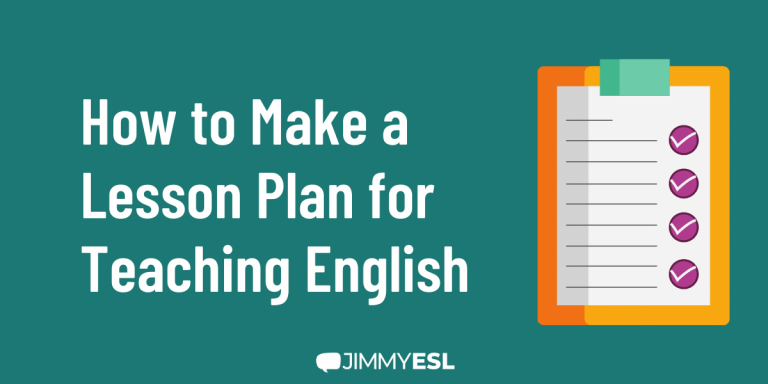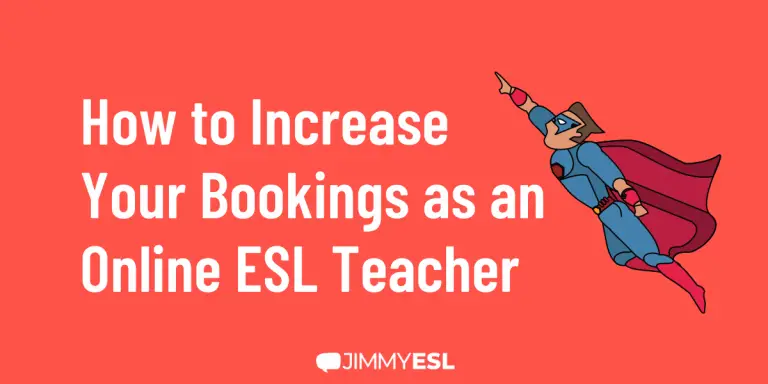The Definitive Guide on Teaching English Pronunciation
How often do your students say they struggle with pronunciation… It’s a lot, right?
English can be really tough in this area and mastering how to teach it will really step up your game as a teacher.
By the end of this article, you will know the pronunciation fundamentals that every teacher needs to know.
You will learn effective activities and be given the resources needed to get the most from your student’s pronunciation.
So, without further ado, let’s get started!
Objectives of Teaching Pronunciation
When focussing on pronunciation it’s important that we focus on that… pronunciation.
This is different from accent reduction where the aim is to sound “like a native”. This goal can take many many years as well as a very high level of immersion.
The point of pronunciation is that we understand which word the speaker is trying to say.
We do this by focusing on things such as word stress, vowel sounds and consonant sounds.
As mentioned, English is tough because although there are some rules, they tend to get broken so often. Added to that, there are plenty of words that sound different to how they are written and it’s a recipe for confusion!
Incorrect pronunciation can lead to mild discomfort at best, and at worse, we could have some incredibly dangerous mistakes.
E.g. A Dr that tells a Nurse to give a patient eighty milligrams of a drug instead of eighteen (because they missed out the n sound at the end!)
International Phonetic Alphabet
One invaluable tool that you will want to familiarise yourself with (if you haven’t already) is the International Phonetic Alphabet (IPA).
This is a method of spelling words based on how the word sounds as opposed to how it is represented in a language.
For example, cough is spelled /kɒf/. Here it is very easy to see that the final consonant sound is an /f/ and not some kind of g.
Let’s look at other ways gh is used:
- Ghost = /ɡəʊst/
- Through = /θruː/ (silent)
- Laugh = /lɑːf/
- Bighead = /ˈbɪɡ.hed/
- Hiccough = /ˈhɪkʌp/
If you can introduce this to your students and show them how to find the phonetic spelling of words on a website like the Cambridge Dictionary then it’s similar to teaching them how to fish (rather than simply handing the fish over).
How to Teach Word and Sentence Stress
Teaching stress can be difficult depending on your student’s mother language.
For a student whose mother language is Russian, it can be fairly simple to explain which syllable the stress should fall on in a particular word. This is because Russian uses variable stress; this is similar to English where the stressed syllable can change in a non-predictable way.
For students from languages such as Polish or Finnish where the stress is on a fixed syllable each time, you will need to explain the difference first.
Then there are languages such as Mandarin or Thai where you will need to explain the concept of stress from the beginning as they more or less lack lexical stress altogether.
Word Stress (Lexical Stress)
For most intermediate and advanced students you will simply need to pronounce a chosen word with the correct stress and then have your students memorise it.
Make sure to test these on a regular basis or have your students use some form of memory aid such as ANKI.
ANKI
ANKI is a free piece of software that is incredibly efficient at helping someone memorise large amounts of information. Very useful in language learning!
It would be a good idea to look at some constants, such as how compound nouns will have the stress on the first syllable of the first word most of the time.
You can also use the IPA spelling which gives the stress of a word with an apostrophe, useful for your students to check while doing self-study.
For beginner students, you will need to explain things from the beginning.
Pick a couple of words that have the stress on different syllables, say them out loud and ask your student if they can hear the difference.
This works better if it’s a verb / noun pair.
Examples: Verb-Noun-Pairs to Practise Word Stress
to increase (verb) /ɪnˈkriːs/ — Increase (noun) /ˈɪn.kriːs/
to record (verb) = /rɪˈkɔːd/ — Record (noun) = /ˈrek.ɔːd/
to permit (verb) = /pəˈmɪt/ — Permit (noun) = /ˈpɜː.mɪt/
to accent (verb) = /əkˈsent/ — Accent (noun) = /ˈæk.sənt/
to digest (verb) = /daɪˈdʒest/ — Digest (noun) = /ˈdaɪ.dʒest/
to overlap (verb) = /ˌəʊ.vəˈlæp/ — Overlap (noun) = /ˈəʊ.və.læp/
They should be listening for a slight raise in pitch as well as raise in volume on the stressed syllables. Once they can hear it, get them to repeat what you are saying.
Sentence Stress (Prosodic Stress)
Although word stress is arguably the more important of these two to get right, eventually your more advanced students will benefit from learning about sentence stress.
A great way to do this is to take a sentence that has plenty of variations of meaning depending on where the stress falls.
Example: Sentence Stress Excercise
Jim stole the chocolate cookie. = It was Jim who stole the cookie (not someone else).
Jim stole the chocolate cookie. = It was theft that was done (not something else).
Jim stole the chocolate cookie. = It was a chocolate cookie that was stolen (not another flavour).
Jim stole the chocolate cookie. = It was a cookie that was stolen (not another chocolate flavoured thing).
After using some examples you can ask your students to give you a sentence that has a particular meaning.
E.g. Who was it that stole the cookie? Which cookie was stolen? etc.
How to Teach Vowels
When teaching vowels it’s important to consider your student’s mother language.
A lot of European languages have the same words with similar spelling. However, vowel sounds can shift in English.
A common example is the word chocolate. In many European countries, this word has a more pronounced ‘a’ vowel sound, this will often sound like the ‘a’ in late. However, in English, this is pronounced as a schwa: /ˈtʃɒk.lət/.
A schwa
…is the unstressed vowel sound found in words such as the, about and pencil.
This will not be the first time you will have to tell your students that a vowel is pronounced as a schwa instead of the vowel they are used to pronouncing in their own language.
We can split our vowels into two groups: monophthongs and diphthongs. Let’s take a look at the differences and how to teach them.
Monophthongs
Monophthongs are the simple vowel sounds that you might find in words such as cat, boom and tree.
You will know when you are producing a monophthong as the shape of the mouth will stay the same.
Have a look at your mouth as you produce the vowel sound in the words not (monophthong) and no (diphthong). In the vowel sound of not, your lips will stay in the same place. However, when you produce the vowel sound in no, you will find that the opening of the lips reduces.
Get your students to do the same so that they can see and hear the difference.
It would be handy to have a list of words that cover all of the monophthongs used in English. This way you can quickly test that your student can make all of the sounds.
After this, you will need to do reading practise so that your students can associate those sounds with words when they read by themselves.
Diphthongs
Diphthongs are often known as gliding vowels. To make these sounds we take two monophthongs and then move between them to get our final sound.
Examples are the vowels in words such as buy, lay, bow.
Although many languages utilize diphthongs, they are non-existent in languages such as Japanese.
For this reason, your students may struggle when introducing these sounds as they will naturally hear them as two different vowels and may give them too much separation.
To break this habit you can have the student pronounce each monophthong separately and then gradually reduce the gap between them until you have a fast, smooth glide.
How to Teach Consonants
When looking at consonants it is common practise to separate these into two groups: voiceless and voiced sounds. Let’s look at the difference.
Voiceless Sounds
Voiceless consonants are sounds that nearly exclusively use just the teeth, tongue and lips to make the sound.
These usually sound “harsher” and include:
Voiceless Consonants
- /k/
- /f/
- /p/
- /s/
- /t/
- /ʃ/(sh)
- /tʃ/(ch)
- /θ/ (th)
Most students shouldn’t have any problems reproducing these sounds. That being said, if the sounds they are producing seem too soft then you can ask them to really force the air out. Start by exaggerating and producing an overly forced sound and then soften it until it sounds natural.
Voiced Sounds
Voiced consonants are a lot softer in comparison. They still utilise the teeth, tongue and lips but the difference is that they bring the voicebox into play.
You can check if you are making a voiced sound by placing your fingers on your voice cords. If you feel them vibrate quite a bit then it is likely a voice sound.
Voiced consonants in English include:
Voiced Consonants
- /b/
- /d/
- /g/
- /dʒ/ (j)
- /m/
- /n/
- /v/
- /w/
- /j/ (y)
- /z/
Voiced and Voiceless Pairs
Once you have established the difference between voiced and voiceless sounds you can introduce voiced and voiceless pairs.
Some voiced and voiceless sounds go together. They have the same teeth, tongue and lip movements. The only difference is that one doesn’t use the voicebox and has a more forceful sound.
An example of this is /d/ and /t/. Get your students to say both of these sounds and notice the difference between them. When producing these it is important that there is enough of a difference so that the listener can differentiate them.
You can demonstrate this importance by using a phrase such as “He is Ted.” vs “He is dead.”
As you can see, this slight change in consonant sound produces a very drastic difference in sentence!
You can then give a list of other example pairs:
Examples: Voiced/Voiceless Pairs
“My car has a dent.” vs “My car has a tent.”
“I sent her a card.” vs “I sent her a guard.”
“I need a pill.” vs “I need a bill.”
“This is a gold chain.” vs “This is a gold Jane.”
“I will visit the zoo.” vs “I will visit the Sue.”
Activities
After teaching the basics of pronunciation you will need ways to drill this information to memory.
Remember that your students will often be unlearning habits from their native tongue which are ingrained in their minds as well as their muscles.
This can take time so always reassure them when they make mistakes that it doesn’t need to be rushed.
You find a selection of activties here – and even more in our dedicated list of ESL pronunciation activities.
Tongue Twisters
Advantage: Very targeted practice for specific sounds
Disadvantage: Sentences are less natural and not likely to be encountered in English
Tongue Twisters are one of my favourite ways to drill pronunciation.
You can take a very specific sound or pair of sounds (e.g R/L for Japanese students or V/W for students of Slavic languages). You then get your students to read through the sentences slowly and each time they read, try it a little faster.
Examples: Tongue Twisters
“She sells seashells by the seashore.”
“Red lorry, yellow lorry, loud lorry, run!”
“Peter Piper picked a peck of pickled peppers.”
“Veronica went away to view a vase”
“They thought the thistles touched their tongues though.”
These will be difficult at first because there are so many tricky sounds but the idea is doing focussed difficult practice like this will make everything else seem easier. Similar to how lifting heavy weights in a gym makes everything else feel lighter after.
Word Lists
Advantage: Can be used for very common words with a particular sound
Disadvantage: Can get boring quickly
Word lists are much simpler in nature. We now just have a list of words that have the target sound in them.
These are great for examples and are essential in associating certain sounds with certain spellings.
That being said, reading a list of words can get a little boring quickly. For that reason maybe pick 10 or so, spend a few minutes on practising the pronunciation and then move on.
Reading
Advantage: Can test a wide range of sounds
Disadvantage: The sounds are so varied so it’s not great for practicing a specific sound
Now, this is a much more natural activity. Find a piece of text from the news, a story or wherever you want.
Have your student read out loud and just make a note of any words that aren’t quite right. After a few paragraphs, check these words with your students.
Sometimes a student doesn’t know the correct pronunciation of a word and sometimes they just made a one-off mistake.
For this reason I like to ask them to read that word again without saying the pronunciation myself to see whether we need to spend time memorising it later.
Movie Mimicking
Advantage: Great for practising with a reference
Disadvantage: Less mentally engaging
Take a movie clip (youtube is a great source for this) and play a sentence and then have your student copy along.
This is called mimicking and is great at achieving correct pronunciation and can also be used for accent reduction.
This one can work well in class for short periods of time but I prefer to set this type of activity for homework when the student can do it in their own time.
Flashcards
Advantage: Incredibly efficient
Disadvantage: Takes a bit of time to set up
This is a very powerful way of memorising pronunciation (a must in English where the words can be spelt so differently from how they sound.)
We will use ANKI for this. First, help your student to set up ANKI and create their first cards.
On side A: Write the target word (e.g. challenge)
On side B: You can either spell the word phonetically, get a recording of the word and attach it to the card or both! (e.g. /ˈtʃæl.ɪndʒ/)
Now, your student will have a reminder to revise these words as well as the reference for each one. For each review, they will be shown either side A or B and will have to recall what the other side is.
I recommend helping them set up ANKI in class and then sending them the reference files etc as homework.
Go this way if you need activities to teach English grammar, too.
Resources
When teaching pronunciation you are going to need text… a lot of text!
This section will give you the places to find articles, stories etc to practise with your students.
I’ve also curated a list of the best books to help develop your pronunciation teaching skills and get the very best out of your students.
News Websites
BBC News
As mentioned already, BBC news is a great resource.
It is continually being updated with new stories, it is well written and uses a wide range of vocabulary that is ideal for testing all sounds that are pronounced in British English.
Wired Magazine
I like Wired magazine as it is more specific to technology.
This is great if you have a student that has a passion for this area or works in this industry. It allows you to test their pronunciation on niche words that they will often use, very useful!
News in Easy English
News in Easy English is my go-to website when I need to check the pronunciation of a beginner student.
Most of the language used is fairly simple and is a great way to get the foundations locked down.
Books
How to Teach Pronunciation
This is essential reading for teaching pronunciation. [amazon link=”0582429757″ title=”How to Teach Pronunciation”] covers the basics (such as vowels and consonants) all the way to more advanced topics such as intonation and connected speech.
It also includes sample lessons to give you immediate ideas on how to start applying these concepts in your lessons.
Cambridge English Pronouncing Dictionary
Exactly as it sounds, the [amazon link=”0521765757″ title=”Cambridge English Pronouncing Dictionary”] contains over 230,000 words and gives the IPA spelling for each. Extremely useful if you are learning how to read and write using the IPA and if you need to check the pronunciation of a word without access to the internet.
As well as the pronunciation list, it contains essays, notes and a glossary explaining various aspects of pronunciation.
Pronunciation Contrasts in English
[amazon link=”1577666410″ title=”Pronunciation Contrasts in English”] is a great book for highlighting the differences between certain sounds.
The authors have brought together the experience of 50 ESL teachers as well as their own experience in teaching and present clear concepts and patterns to help teach non-native students.
This is the ideal choice for teaching minimal pairs and other such similar sounds.
Summary
So you should now have a much clearer idea of how to teach English pronunciation to your students.
Remember that you will find a lot of students who choose to self-study and are happy building their grammar and reading skills alone.
However, pronunciation is one of the areas that has been the most in-demand with my students.
Being able to provide feedback and explain pronunciation concepts in a concise and easy to understand way has kept my students coming back for more.
Get this right and you will find the same happening for your lessons!
Browse the full archive of ESL teaching resources.







Hello, as a very long time ESL teacher from the US, I am currently teaching Russian students native American pronunciation to deal with western businesses. I use the exact same ideas you have but specifically omit any British English. One suggestion I have is to include intonation and rhythm along with the stress on words and syllables. Stress is easy to explain but difficult to teach. Great blog!